#Vehicle Axle Technology
Explore tagged Tumblr posts
Text
Automotive Axle Market Drivers: Key Growth Catalysts Reshaping the Future of Mobility
The automotive axle market is undergoing significant transformation, driven by evolving consumer preferences, technological advancements, and regulatory changes. An axle, a critical component in vehicle design, plays a pivotal role in transmitting power from the engine to the wheels while supporting the weight of the vehicle. With automotive technology evolving rapidly, the demand for robust and efficient axle systems is on the rise.

One of the primary drivers of the automotive axle market is the increasing global vehicle production. Despite periodic fluctuations due to economic downturns or pandemics, the long-term trend in automobile manufacturing remains upward, especially in developing economies. Countries such as India, China, Brazil, and Indonesia are witnessing a surge in automobile ownership, fueled by rising disposable incomes and urbanization. This directly correlates with increased demand for axle systems in both passenger and commercial vehicles.
The rapid shift towards electrification of vehicles is another major growth catalyst. Electric vehicles (EVs) often require different axle configurations compared to traditional internal combustion engine vehicles. For instance, EVs are commonly designed with e-axles—integrated systems that combine electric motor, power electronics, and axle into a single compact unit. The surge in electric vehicle adoption, propelled by government incentives, stricter emission norms, and consumer awareness of sustainability, is pushing axle manufacturers to innovate. These innovations include lightweight axles for improved efficiency and advanced materials for better durability and performance.
In addition to electrification, stringent government regulations regarding fuel efficiency and emissions are influencing axle design and manufacturing. Automakers are under pressure to reduce vehicle weight without compromising strength or safety. As a result, manufacturers are increasingly turning to lightweight materials such as aluminum and composites to produce axles. These materials help reduce the overall weight of the vehicle, thereby improving fuel efficiency and reducing emissions, aligning with global sustainability goals.
Another significant driver is the growing demand for all-wheel drive (AWD) and four-wheel drive (4WD) vehicles, especially in regions with harsh climates or rugged terrain. SUVs and off-road vehicles, which often come with AWD or 4WD configurations, require more complex and durable axle systems. As consumer interest in such vehicles continues to grow, so too does the demand for specialized axle technologies capable of delivering superior traction and performance.
Technological advancements are also playing a vital role. The emergence of smart axles with integrated sensors is transforming the traditional axle system. These smart axles can monitor load, temperature, and vibrations, offering real-time data that enhances safety and maintenance. This is especially beneficial in the commercial vehicle segment, where fleet efficiency and predictive maintenance are key operational concerns.
The rise of autonomous and connected vehicles is expected to further influence the automotive axle market. These vehicles require enhanced precision, control, and integration of various systems, including axles. As the automotive industry moves toward higher levels of autonomy, axle systems will need to adapt to new design paradigms, requiring higher levels of sophistication, integration, and electronic control.
Moreover, aftermarket demand for axle replacement and upgrades is growing steadily. With vehicle longevity increasing and used car markets booming, there’s a constant need for replacement parts. This supports sustained growth for aftermarket axle manufacturers and suppliers, especially in regions where vehicle maintenance and customization culture is strong.
In conclusion, the automotive axle market is being shaped by a confluence of factors ranging from global vehicle production growth and electrification to regulatory mandates and advanced technologies. The market's future lies in innovation, lightweight design, and adaptability to new mobility models. Companies investing in R&D and embracing digital transformation will likely lead the way in capturing emerging opportunities within this dynamic sector. As the world moves toward a more connected, electric, and sustainable transportation ecosystem, axles will remain a foundational component, evolving alongside the vehicles they power.
#Automotive Axle Market#Vehicle Axle Technology#Electric Axle Systems#Automotive Innovation#Axle Manufacturing
0 notes
Text
Inovații în Tracțiune Integrală: Deconectare Electro-Mecanică pentru Vehicule Electrificate AWD și 4WD
Într-o eră în care vehiculele electrice (EV) devin tot mai populare și cerințele pentru eficiență energetică și performanță sunt tot mai mari, sectorul auto se află într-o transformare rapidă. Multe țări impun tranzitul către propulsia electrică, iar producătorii de vehicule se confruntă cu provocarea de a dezvolta soluții inovative care să îmbine performanța cu economia de energie. În acest…
#4×4 electric vehicles#4WD#ambreiaj dinamic#Amsted Automotive#auto technology#automotive solutions#autonomie vehicul#AWD#axle disconnect#bam#cuplu#deconectare punte#diagnoza#dynamic clutch#economisire energie#electric propulsion#electric SUV vehicles#electric vehicle performance#Electric Vehicles#electrificare#electrification#energy saving#innovation#innovative technologies#inovație-auto#Means Industries#neamt#propulsie-electrică#roman#soluții auto
0 notes
Text
Mercedes-Benz EQS 580: Luxury Electric Sedan Review
₹1.62 Cr The Mercedes-Benz EQS 580 4Matic represents the pinnacle of electric luxury sedans, blending state-of-the-art technology, remarkable performance, and the renowned craftsmanship Mercedes-Benz is known for. Here’s a detailed breakdown: Design and Aesthetic Appeal The EQS 580 exudes sophistication with its aerodynamic design and avant-garde styling. Every design choice balances form and…
#Advanced Safety Features#Aerodynamic Design#Autonomous Driving#Electric Luxury Sedan#EQS 580 4Matic#EV Technology#Fast Charging EV#Future of Mobility.#High-Performance EV#Hyperscreen#Intelligent Connectivity#Long-Range EV#Luxury EV#Luxury interior#Mercedes Electric Car#Mercedes EQS Review#Mercedes-Benz EQS 580#Mercedes-Benz EV Range#Premium Electric Vehicle#Rear Axle Steering#regenerative braking#Sustainable Mobility
0 notes
Text
Prison in the world of Cars
So Im currently in the process of writing chapter 8 of Behind Blue Eyes and said chapters' content has got me thinking about the various minutiae of prison systems within this universe. Here is my take on it.
Speed restrictors - In order to prevent any kind of escape attempt, speed restrictors would be fitted to inmates with a high flight risk to prevent any speed being reached above about thirty miles per hour. In some cases, it could be deemed necessary to decrease speed potential even further for the most dangerous offenders. But the use of these devices comes with a significant quantity of government regulation to prevent their misuse. The fitting of restrictors can cause engine issues in the long run and shouldn't be used without prior approval from a court.
Parking boots - Wheel cuffs. I needn't say much more than that. No moving for you! They can be used on both front wheels, both back wheels or all four wheels depending on requirement. But one or three parking boots should never be utilised as this can cause serious damage to the detainee if they were to try and drive.
Extension restraints - For particulary strong and violent offenders, axle extension restraints can be applied. Parking boots are the go-to for prisoner transport, which are heavy and cumbersome. But for strong vehicles who want to get a few punches in, the use of parking boots can be particularly hazardous to police officers. So these restraints can be utilised to prevent any damage to other vehicles or property that could be caused by the detainee.
Deep tread tyres - It would be damaging to a vehicle to force them to roll around on tyres with deliberately low pressure. So to increase drag for inmates, a thicker tyre tread is used. This has the added bonus of reducing the amount of replacements required during sentence duration, thus cutting down on costs. Although the tyres used increase the vehicles ability to grip into the floor and push or pull, the officers that respond to any issues with the prisoners within their care are usually able to subue them rapidly and effectively. Prison tyres are ugly and not comfortable to drive on.
Chemically engineered paint - With technological advancements and genius chemical engineering, the paint used on inmates is very specific and can be picked up from quite a distance away with the use of police scanners. It holds its own unique chemical formula that lights up like a christmas tree when scanned with the appropriate digital equipment. The colour is also utilised as a tell-tale sign as it is a highly distinctive and vibrant orange; the only orange paint of its kind. This paint can only be purchased for prisons, by prisons. To be in possession of this paint without the appropriate licensing carries both a hefty fine and a prison sentence. So if an unlicensed vehicle is caught with it, they will very quickly be wearing it. The chemical does, however, hold the unfortunate capacity to seep into and embed itself into the surface of metal through layers of paint, meaning that, even if a vehicle is released and repainted (repainted on the offenders dime might I add), they will still be picked up on police scanners. This leads them to be regularly stopped and questioned by police officers. This can be incredibly irritating to both parties, however it does allow officers to keep an eye on offenders that are on probation. Vehicles that are permitted to be external to the prison whilst on remand are sprayed with just the traceable chemical component of the paint, which is invisible to the naked eye. A small stencil is utilised in the form of the sigil of the police force that made the arrest. This makes them traceable to police, but prevents civilians from seeing that said vehicle could be facing criminal charges. For those that can afford the expensive procedure, this chemical is removeable by removing all layers of paint and primer and grinding down the surface layer of the bare metal. This can be painful, so a general anaesthetic is provided.
Fuel quantity control - As previously displayed in the first cars movie, fuel quantity is important when you want to try and escape from the cruel clutches of community service. The same principal can apply in prisons. Fuel intake is heavily regulated and no inmate is usually permitted any more than 1/8 to 1/6 of a tank at any time. There are exceptions to this in regards to specific jobs that inmates perform as some will require larger quantities to perform their duties. Which is usually met with seething envy.
GPS locators - This method is even more heavily restricted than the use of speed restrictors as it violates multiple data protection laws and vehicle rights legislation. However, in the correct circumstances, it can be very useful. This is only ever used for vehicles that are both incredibly dangerous and have a high flight risk.
Remote engine inhibition - A vehicles engine can be shut down at the push of a button after modifications to the programming of the ECU have been made. This method of inmate control is incredibly new and still in its theoretical stages and thus it is still being debated whether or not it is viable and vehmane. Considering its highly intrusive nature and possibly damaging consequences to both the escapee and the general public, if it were ever to pass into legislation, its useage would be very rare indeed.
Medical care - Each vehicle within the prison system must have a three monthly check up with a desigated mechanic and all new inmates must be checked once a week for the duration of three months. Considering high depression rates within prison systems, a lot of vehicles, especially first time offenders, will stop consuming oil due to stress. This can lead to sickness and fever/overheating, which causes severe issues in the long run.
Not all of the above restraint/tracking methods will be used in all cases as it will depend highly on sentencing requirements for specific individuals and the type of prison that they end up in.
I might update this at a later date if I think of anything else to add. But so far, this is all I've got.
In a nutshell, its INSANELY difficult for any vehicle to escape a prison. So Miles Axelrod is pretty fucked.
#pixar cars#cars fandom#cars#cars pixar#cars headcanons#cars 2#cars 3#miles axlerod#prison for vehicles#vehmane is humane but for vehicles#i dunno man#i tried#new fandom word maybe?#does it even make sense?
68 notes
·
View notes
Text
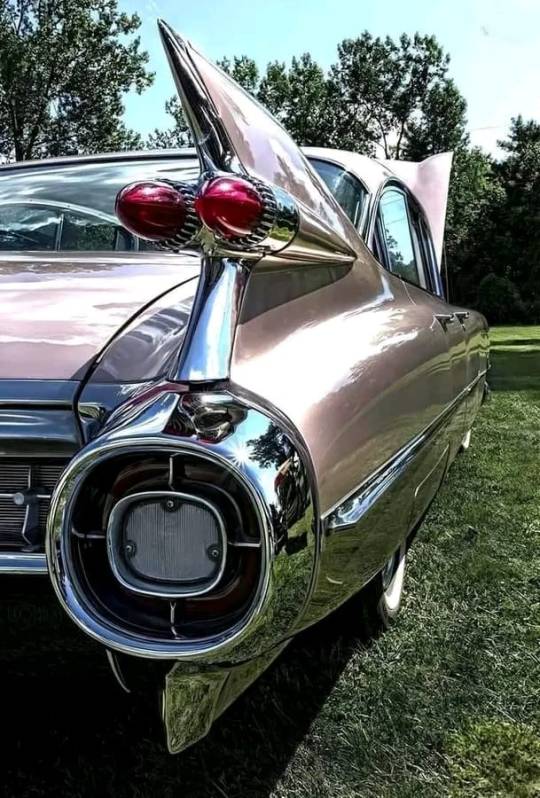
Cadillac was founded in 1902 by Henry Leland, who named the company after Antoine de la Mothe Cadillac, who happens to be the founder of Detroit. Just 6 short years later Cadillac brought the idea of interchangeable parts to the automotive industry and laid the ground work for modern mass production of automobiles. As a result, Cadillac became the first American car to win the prestigious Dewar Trophy from the Royal Automobile Club of England. After earning such high praise Cadillac adopted the slogan "Standard of the World."
In 1910, Cadillac became the first company to offer a passenger car with a fully enclosed cabin, a major change from the vehicles of the time. Two years after that, in 1912, the company released the Model Thirty, the car with no crank, which was the first production car to feature an electronic self-starter, ignition, and lighting. By dropping the crank starter, Cadillac opened the door to women drivers, and was able to bring the prestigious Dewar trophy back to Detroit, making Cadillac the only car manufacturer to claim the award twice. Nearly three years later, Cadillac brought the world the V-type, water-cooled, eight cylinder (V8) engine, which would become the signature of the Cadillac brand.
The Roaring 20's was not only a big decade for the country but was also important for Cadillac. In 1926, Cadillac branched out and offered customers more than 500 color combinations to choose from. As the famous Henry Ford saying goes, you can have any color you want, as long as it's black. Cadillac changed this mentality. That same year, the company brought in designer Harley Earl to design the 1927 LaSalle convertible coupe, which made the car the first to be designed from a designer's perspective rather than an engineering one. What Earl created was elegant, with flowing lines, chrome-plate fixtures, and an overarching design philosophy, that made the Cadillac brand known for beauty and luxury.
In the middle of the 1930's a midst The Great Depression, while most companies and families were struggling Cadillac created the first V-type 16-cylinder engine for use in a passenger car. This engine would go on to be one of the most iconic engines in Cadillac history. Shortly thereafter, Cadillac released a V12 version to give buyers something between the already popular V8 and new V16 engines.
Cadillac went quiet in the 1941's when they suspended automobile production to help produce planes for the war. After the war ended Cadillac adapted some of the aircraft technology and created the first ever tailfin on a vehicle. This feature is now found on almost every car and was one of the biggest reasons that Cadillac was given the first ever Car of the Year award in 1949.
The tailfin took off rather quickly and by the mid to late 1950's it was being featured heavily in the design of nearly every vehicle. Also in the 50's Cadillac began developing power steering, which helped the automaker take third, tenth, and eleventh places at the 24 Hours of Le Mans. After Cadillac's stunning "victories" power steering quickly became the new standard of the industry.
Small but meaningful innovations filled the 1960's for Cadillac. In 1963, the company made front seatbelts standard in their vehicles, which lead to the eventual passing of a federal law requiring front seatbelts in all vehicles just one year later. Then, in 1964, Cadillac brought to market automatically controlled headlamps and redefines luxury with Comfort Control, the industry's first thermostatically controlled heating, venting, and air-conditioning system. Over the next few years, Cadillac introduced variable-ratio power steering, electric seat warmers, and stereo radio.
While the 1960's were fairly quiet, with only some smaller, luxury items being introduced, Cadillac started out 1970 with a major bang. Cadillac opened the decade by unveiling the 400 horsepower, 8.2-liter engine Eldorado. With its completely redesigned axle this model boasted the highest torque capacity of any passenger car available at the time. Closing out the decade, Cadillac brought to market the 1978 Seville which used onboard microprocessors in its digital display. This started the era of the computerized automobile.
Throughout the 1980's Cadillac laid low, working on some new technologies that would come to market in the early parts of the 1990's. The first feature to debut was an electronic traction control system on front-wheel drive vehicles. Cadillac began offering this as a standard feature on the 1990 Cadillac Allante. This same year Cadillac would go on to win the Malcolm Baldrige National Quality Award. Two years later, in 1992, the company developed a feature that allowed the engine to run for up to 50 miles without coolant, and a unique induction system for near-perfect fuel distribution. The Seville Touring Sedan of that year would become known as the "Cadillac of the Year" thanks to features such as an all electronically controlled Powertrain, traction control, anti-lock brakes and speed-sensitive suspension. Closing out the decade, Cadillac introduced the, now iconic, Escalade SUV.
CELEBRATING 100 YEARS AS 'THE STANDARD OF THE WORLD'
Coming up on the 100th anniversary of the Cadillac brand, the company had to do something big or the decade, and they did not disappoint. Cadillac started off the 200's by introducing the F-22 stealth aircraft inspired Cien Concept, which ended up winning a few design awards. Later in the decade, in 2008, Cadillac expanded the Escalade SUV by making it the world's first full-size luxury hybrid SUV. In the same year, the company redeveloped the CTS Sedan. This redesign has been incredibly popular and even won the coveted 2008 Car of the Year award. A short year later, the performance edition CTS-V, becomes the fasted V8 production sedan in the world, establishing a record lap time of 7:59:32 on Germany's famed Nürburgring.
#cadillac#cadillac eldorado#cadillac fleetwood#cadillac deville#cadillac coupe de ville#Cadillac escalade#car#cars#Cadillac Escalade SUV
69 notes
·
View notes
Text
Carts and Wagons and Wains, Oh My!
Hello, medieval and fantasy writers, D&D parties, and all other people who like pedantic details about old-school transport technology! There are many words for the wheeled vehicle pulled behind an animal (or several animals). And while a lot of people use them interchangeably, you can have much more fun if you use the names to refer to the specific types!
Cart

A cart is a two-wheeled vehicle, with its single axle mounted solidly to the frame, and a small amount of weight on the back of the animal pulling it. They can only carry as much as a single axle will bear, but because they can pivot around that single axle, they're much more maneuverable.
The driver might sit on the cart, or on the animal, or even lead the animal on foot, depending on how much there is to carry. And be careful of how you load it, because you might weigh down the animal too much, or not enough.
There are more specifically named carts as well, usually based around their usage. A hay cart can become a turnip cart just by taking out the hay and getting in some root vegetables. Any cart can become a dung cart, but you might not be able to turn it back afterwards.
Wagon or Wain
A wagon (from Middle Dutch wagen, from Proto-Germanic *wagn) or wain (from Middle English Weyn, from Old English wæġn (Old English pronounced g as y sometimes), ALSO from Proto-Germanic *wagn) is a four-wheeled vehicle that doesn't put any of its weight on the animal pulling it.
The big drawback is that you need to make the front axle able to pivot, so that you can steer the dang thing. That's harder to do, and not as strong as a solidly mounted axle. But you can get a longer bed and more weight, and also often more animals to pull it.
"Wain" is a little more old-timey in usage and mostly survives in its use in compounds like "haywain", a wain for carrying hay, a wain specifically for the transportation of hay </kronk>.
Chariot

A chariot is a cart (with some exceptions) made specifically for speed and for only carrying people. Heavily armed people.
Sometimes there were super-heavy four-wheeled chariots, but long before the English language existed, and infrequent enough to not really have a word for them.
Usually a chariot would have one or two horses, but the Roman racing chariot, the Quadriga, was named because it had a team of four horses (the inner two taking the weight to balance the vehicle, the outer two just being there to pull).
Carriage

A carriage is ... well, basically a wagon, but specifically one made for the transportation of people. Instead of a flat bed for whatever cargo, you have at least some kind of seating.
These can be as basic as a hay wagon but with seats, or as fancy as the gilded liveried ridiculousness shown above.
Coach
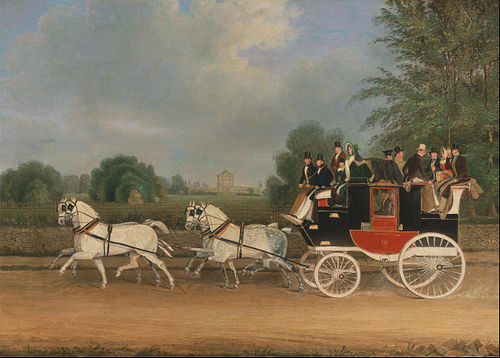
You know what would make a carriage more comfortable? A roof. Technically a sub-category of carriage, a coach is "what if carriage, but it was a little room to stay warm and dry in". The driver sits outside though, maybe with a little roof, because the windshield has yet to be invented, and also he needs to hold the reins. They can also have extra seating on top, because "what if this flat surface had seats on it" was already how we got from wagon to carriage, and then they added another flat surface.
Stage Coach

Not actually a design, but a whole system. When you need rapid transportation of passengers and light cargo (i.e. mail), you can only drive the horses at full speed for a certain amount of time before they're exhausted and need at least the rest of the day off. So you work out a deal with the coaching inns to have spare sets of horses, and while most people will go from one inn to the next in about a day's travel (that's why they spaced them out as they did), if you rush through them and just stop to change horses, you can get a lot further in a day at the cost of a lot more horse feed and keeping, and a really sore butt on bad roads.
Think of the Pony Express, but instead of a rider changing horse, a whole coach changes a full team of horses. By the time the next stage coach comes through, that set of horses should have had some time to recover.
Sulky
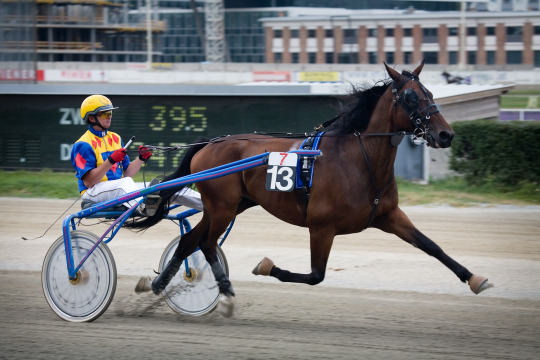
Did you know that, technically, chariot racing never went away? It's just that these days, the one-horse carts are made super super light — think of all the tech we developed to make bike frames as light as they are, especially the wheels. Usually called harness racing, but the vehicle itself is a sulky. The other big difference between a sulky and a quadriga (other than a quarter the horsepower) is that the jockey can't whip his competitors.
Hope this helped. Or was interesting.
11 notes
·
View notes
Text
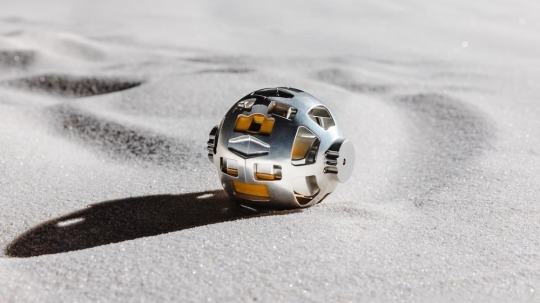
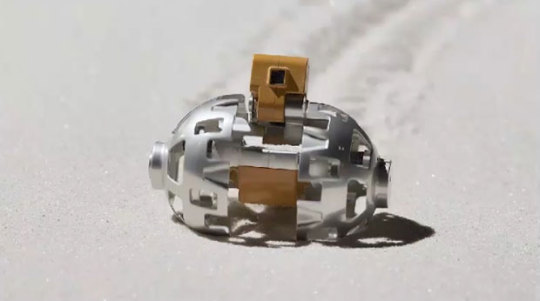
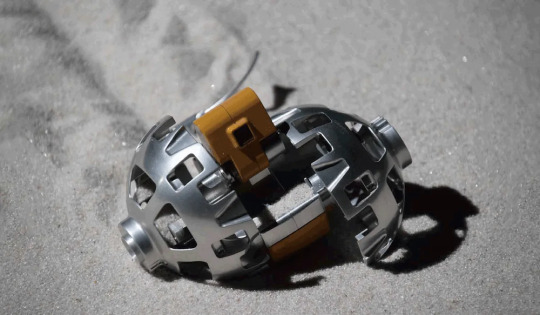

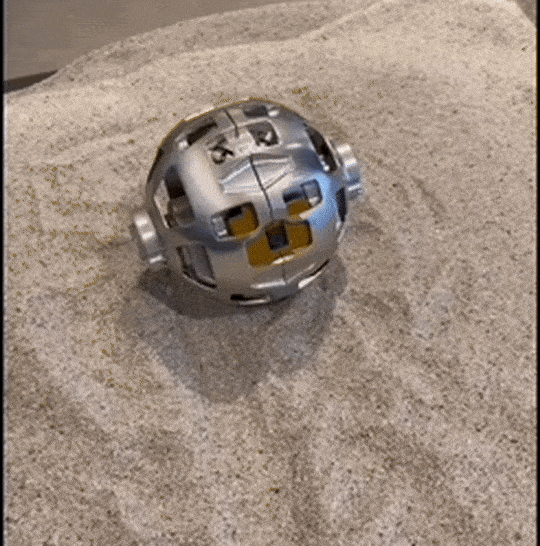
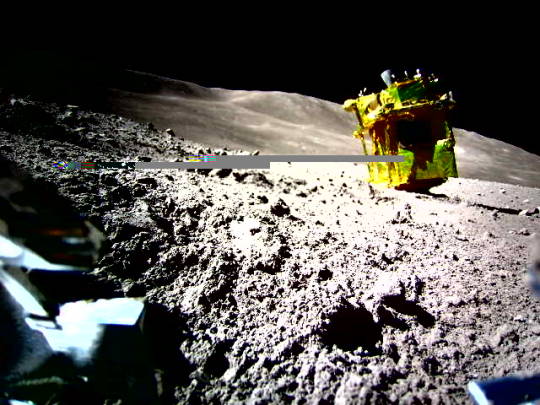
SLIM Lunar Excursion Vehicle 2 (LEV-2, AKA SORA-Q) by Tomy, JAXA, Sony Group, and Doshisha University (2023). The Smart Lander for Investigating the Moon, or SLIM (final photo), was launched from Japan on September 6 2023, due to make a precision lunar landing on January 19 2024. It will deploy LEV-2, an 8cm diameter, ball-shaped, transforming robot. Once on the surface of the moon, the robot splits, expands left and right, and a reaction trail pops out in a vehicular configuration. The wheels are mounted on an eccentric axle able to run in two modes, 'butterfly running' or 'crawling running'. The LEV-2 will be released from the lander 1.8 metres above the lunar surface, and begin rolling around to capture SLIM's landing and the surrounding area. LEV-2's battery is only expected to last about two hours.
"SORA-Q looks something like a metallic Wiffle ball and takes its name from sora, which means “sky” in Japanese; the “Q” is a homonym for the Japanese word meaning “sphere.” As the dust settles, SORA-Q will unfold like a Transformer: the sphere will split in half, exposing a pair of cameras and dividing its two hemispheres into wheels. In the case of M1, mission controllers will remotely instruct their SORA-Q to turn toward the main lunar lander and transmit images back to Earth." – A Mini Moon Rover from the Toy Company That Created Transformers, by Matt Alt, The New Yorker.
"We designed the vehicle to be a spherical object with expandable wheels and a stabilizer using the transforming technologies for toys. Moreover, we adopted the robust and safe design technology for children's toys, which reduced the number of components used in the vehicle as much as possible and increased its reliability." – Hirano Daichi, Palm-Sized Lunar Excursion Vehicle 2 (LEV-2).
In 2023, Tomy released a retail model, called the Sora-Q Flagship Model. It has the same transformer abilities, and can be remotely controlled with a smartphone app.
UPDATE: The Tomy LEV-2 / SORA-Q rover successfully returned this incredible image of the SLIM lander nose down on the Moon (final image).
56 notes
·
View notes
Note
"Don't Deal with a Dragon" shadowrun ozzy???? shadowrun ozzy????? i dont know shit about shadowrun but may i get a shadowrun ozzy??
Send me "Don't Deal with a Dragon" and I'll assign your character a Shadowrun character concept" | ACCEPTING

---- In the depths of Europe, a tiny village is barely a dot on a map. They have connection to the Matrix, but they're the kind of remote that GridGuide never even considered them as a possible place to implement self-driving cars. After all, the vehicle population was on average older than the company itself. These were a people that didn't need to be sold cars.
But what they were sold was a religion. They were sold mechanical workers to help till their fields and clear the snow and hang up the lights for their blackbird rites and rituals.
This was a place that used the Matrix as one did the old 'net. Watching videos, for trideo development was unnecessary. Why have holograms when a handyman or codejockey could turn the scrap of old satellite tech into uplinks, route 'em to old televisions that would make even the most tech-illiterate sprawler gag.
In a village such as this... who would expect the pastor of the church to be one of the most technologically-advanced of his people? To have made pilgrimage to the cities of Europe, taken of their strengths, while maintaining the humility of his position? A man with a flock of crows, who learned to adapt to the changing times, rather than stay stuck in tradition and rite. A flock of chrome bones and cameras for eyes, with minds of code made to evoke the personalities and livelihood of the corvid they impersonate.

---- The man was a Rigger, whose spine and nerves had been invaded by technology, who could connect to compatible vehicles and drones and become them. The twitch of a finger flexes pistons, a tensed shoulder turns the steering axle, a clenching of the diaphragm introduces gas into the engine and the car goes. Eyes become windows into the soul of the machine, cameras on the dashboard giving the rigger an out-of-body experience... and far more granular control than was otherwise humanly possible. Each and every one of his bird-drones, made to look like the real things, could be inhabited, the only indication that anything was any different was that the bird would go still. It would 'forget to act', and it would pay more attention. Blink... and you'd miss it. The less said about any magician who claims "Raven" as their mentor spirit in his presence, the better.
Any of Father Oswald's birds could be possessed so, lending an air of credibility to tales of children and sinners being watched by the godly. When money grew tight, the preacher would leave sermons for... who? Altar boys? The devout? Someone would have to tend to the village whilst he travels to the cities, he would indulge in their lights and their vices, and be paid to smuggle, kill, and steal.
His body is marred by cyberware; smuggler's compartments form pockets that were taut in his youth, and remain strengthened by their implantation despite the rigors of age around them. Small pouches in the flesh, large enough and water-tight to carry things over borders and through rent-a-cop inspections. Obvious chrome keeps others from searching the old flesh, and law enforcement are all the more fools for it.
---- Accompanied by crows, the runner known as "Flock" keeps abreast of developments in the nearby cities. Old friends, from before he went into retirement ("this time for certain" he would say, lasting anywhere from months to years before he took another run) do not reach out first. They always wait, and they always think of him when opportunities flitter over their commlinks, trickling down through the shadownet and across their desks. How many crews has he run with, missions and schemes concocted over weeks or months, executed to perfection before he left for his little village again, several thousand nuyen the richer, and expecting never to see comrades and coworkers again?
How many times did he leave with one of their number left in a shallow grave?
No, Flock was an enigma, and in his career he's forgotten more than most runners ever get to learn. He was alive when the first Orks and Elves were born, when the dragons emerged and the Sixth World was made manifest. His has been a life of adapting to an ever-changing landscape, more aware than any of you how fluid the Megas' hold on the world truly are, no matter how monolithic and untouchable they present themselves. He is a sailor, and he is guided by only one north star.
PRIORITY TABLE: AACEE [ Skills / Attributes / Resources / Magic & Resonance / Metatype ]
A - SKILLS (46 points for individual Skills, 10 points for Skill Groups)]
A - ATTRIBUTES (24) [ Spread between BODY / AGILITY / REACTION / STRENGTH / WILLPOWER / LOGIC / INTUITION / CHARISMA, usually starting at 1/6, but different Metatypes have different starts and limits ]
C - RESOURCES (140,000¥) [ Spend this before starting the game to determine what your character owns; you cannot keep more than ~1,200¥ after your spending spree. This accounts for buying your lifestyle, clothes, armor, weapons, vehicles/drones, etc. ]
E - METATYPE ("choose one"; just kidding, Priority E Metatype locks you to being human.) >> Human (1) [ Add the number after your metatype to your EDGE attribute. EDGE is your 'Luck' stat.
E - MAGIC or RESONANCE (NONE, you're MUNDANE, old man!)
#confessthysiins#Shadowrunner Assignment#A Message From the Investors! | Ask#[ This was a fun one to theorycraft ]#[ god these are long ]
4 notes
·
View notes
Text
Wheels, Axles, and Carts
Wheels and axles are simple machines that allow humans to move much heavier loads than they could without them as well as for specialized purposes such as the pottery wheel. The wheel appears to have been invented independently by many cultures or adopted it so closely it looks like it was developed independently in the Middle East, Europe, Eastern Europe, India, and China.

By Petar Milošević - Own work, CC BY-SA 4.0, https://commons.wikimedia.org/w/index.php?curid=88421247
Solid wheel disks appeared in the late Neolithic and seem to be pivotal to the development of the technology of the Bronze Age. During the time between the development of agriculture and the wheel, there are about 2000 years (in Mesopotamia, between about 6500 and 4500 BCE). This time is known as the Pre-Pottery (or Aceramic) Neolithic. The potter's wheel allowed for easier production of pottery, beginning with a slow wheel then developing into a fast wheel. The oldest potter's wheel we've found is in Mesopotamia is from about the 4th millennium BCE, though there is evidence of one in Western Ukraine of the Cucuteni-Trypillia culture that dates to about the middle of the 5th millennium.

By Silar - Own work, CC BY-SA 3.0, https://commons.wikimedia.org/w/index.php?curid=29902699
There are depictions from the Halaf culture in northeastern modern-day Syria from about 6500-5100 BCE that show wheeled vehicles, but there isn't evidence that they used them. There are also what seem to be toys throughout Europe that begin to show up before 4000 BCE. Depiction of wheeled vehicles appear in artwork was between 3631-3380 BCE on the Bronocice clay pot, which was found in Southern Poland. There was also a 2.2m wide doorway found that were dated to 5000 BCE. These early wheels were wooden disks with holes for the axle to pass through. These wheels tended to be stronger if they were made from longitudinal boards rather than from horizontal cuts of a tree.

By Zereshk, CC BY-SA 3.0, https://commons.wikimedia.org/w/index.php?curid=171752
Spoked wheels, which made vehicles lighter and faster, were developed around 2000 BCE, likely by the Sintashta culture of the southern Urals. These were likely used for war chariots for about three centuries before they moved into the Greek peninsula and then through the rest of the Mediterranean quickly after. The spoked wheel is credited with the breaking of Minoan dominance and allowing classical Greek period. The spoked wheel likely reached Britian around 1100-800 BCE. Solid wheels likely reached China around 2200 BCE with spoked wheels following around 2000-1500 BCE.

By Madman - Own work, CC BY 2.5, https://commons.wikimedia.org/w/index.php?curid=1861429
In the Americas, wheels weren't used for travel, though they do appear to have been used for children's toys beginning around 1500 BCE. The lack of use for travel is theorized to be to a lack of large, easily domesticated animals like horses or oxen in the Americas. Bison were never domesticated and the horse species that did exist in the Americas were extinct by about 10,000 BCE. Llama, which were domesticated, were not particularly suited to pulling wheeled vehicles. Wheelbarrows and potters wheels were never developed and wheels seemed to have remained as ways to make children's toys to be pulled. The only practical wheel-and-axle technology that seemed to have been used is a spindle and whorl.

By Gary Todd from Xinzheng, China - Han Iron Gears, CC0, https://commons.wikimedia.org/w/index.php?curid=101967575
Gears, toothed wheels used to transfer rotational motion and possibly change the speed or direction of that motion, were developed around 400 BCE and in China, and spread from there. Aristotle mentioned gears in about 330 BCE, who mentioned the change of direction caused by gears. Philo of Byzantium, also known as Philo Mechanicus, used gears to raise water. They were also used in the Antikythera mechanism for astronomical calculations and was constructed between 150 and 100 BCE.

By Andy Dingley - Own work, CC BY 3.0, https://commons.wikimedia.org/w/index.php?curid=4944626
In the early to mid 3rd century CE, a Chinese engineer named Ma Jun developed a series of differential gears, a series of gears that rotate at different speeds while averaging the output of that speed, to create a cart that had a figure that always pointed to the south.
3 notes
·
View notes
Text

Learn about our cutting-edge technology, Electric Vehicle Axle, which was created internally to provide a small and effective drive solution for modern EVs. It ensures optimal efficiency with characteristics including lightweight construction, smooth multi-speed operation, and cold forged gears for increased strength. 25", 33", 35", and 42" sizes are available. Visit Swan India.
1 note
·
View note
Text
Automotive Drive Shafts Archives for High-Speed Racing: Strange Oval

A drive shaft is a small component, but it is very essential for high-speed racing. It provides rotational torque and power that are transmitted to the wheels to help them take sharp turns from the corners efficiently. Strange Oval provides racing components that are engineered especially for your high-speed racing competitions.
Explore the Drive Shaft Archives on Strange Oval’s website, and you'll find a collection of modern components made for serious racers. These aren’t your everyday automotive parts—they're high-performance solutions tailored for the track. Designed to handle brutal torque loads, rapid acceleration, and demanding race environments, these drive shafts are the unsung heroes that deliver consistent results under pressure.
The Role of a Drive Shaft in Racing
A drive shaft is more than just a connector—it's the backbone of your drivetrain. Its primary function is to transfer torque from the transmission to the differential, ensuring that the power generated by your engine results in real motion on the track. In high-speed oval track racing, where split-second acceleration and consistent torque delivery are critical, a high-performance drive shaft can make all the difference.
Traditional automotive drive shafts often can't handle the demands of competitive racing, where rotational speed, vibration resistance, and weight optimization are key. That’s where Strange Oval comes in—with a purpose-built lineup designed to handle extreme conditions lap after lap.
Engineered for Precision and Performance
Strange Oval drive shafts are built with materials and designs that prioritize strength, weight reduction, and vibration control. Available in both aluminum and carbon fiber constructions, each drive shaft is manufactured to tight tolerances using advanced technology like precision welding, balancing, and spline fitting.
These shafts are tailored to the needs of serious racers who require maximum power transfer without risking driveline failure. Carbon fiber options, in particular, offer an ideal balance between lightweight design and strength, reducing rotating mass while maintaining durability.
Customization and Compatibility
No two race setups are exactly alike. Strange Oval understands this and offers customizable options for length, diameter, and spline count to ensure proper fitment across a range of chassis and driveline configurations. Whether you're running a Late Model, Modified, or Sprint Car, there’s a drive shaft solution designed for your needs.
This level of flexibility makes Strange Oval a trusted partner in the racing community. Racers can work directly with the Strange Oval team to get the precise measurements and specs they need, helping avoid common issues like driveline vibration or component wear.
Safety Comes First
While performance is the top priority for any racer but safety cannot be ignored. Strange Oval’s drive shafts are designed and engineered with fail-safe technology and are subjected to rigorous quality control procedures. The suitable drive shafts deliver smooth operations at high RPMs, minimizing the chances of mechanical failure under the rigorous conditions of racing.
Additionally, some essential components, such as U-joints and slip yokes found in Strange Oval drive shafts, are engineered to provide both power and durability, minimizing the risk of sudden breakage that could compromise safety or damage other parts of the vehicle.
Why Choose Strange Oval?
Strange Oval has built its reputation on supplying high-quality, performance-tested racing components for serious drivers. Every product, from drive shafts to axles and beyond, is backed by years of engineering experience and a deep understanding of oval track performance.
Choosing from the full range of Strange Oval Racing Parts ensures you’re getting more than just a component—you’re investing in reliability, safety, and a competitive edge. These parts are trusted by professionals who know that winning starts with what’s under the car.
Final Thoughts
Motor racing is very competitive sport, where every second matters. Using Strange Oval’s racing components can make the difference. Their drive shaft is suitable for upgrading your vehicle to generate high power and performance during the vigorous conditions of oval track racing. Strange Oval’s racing components are built to deliver performance, durability, and smart customization. Explore the drive shaft archives and get trusted racing components!
#drive shafts#Strange Oval drive shafts#racing drive shafts#oval track drive shafts#lightweight drive shafts#performance drive shafts#carbon fiber drive shafts#aluminum drive shafts#modified drive shafts#late model drive shafts#dirt track drive shafts#asphalt racing drive shafts#racing drivetrain parts#oval racing components#high performance drive shafts#durable drive shafts#IMCA drive shafts#UMP drive shafts#NASCAR drive shafts#race car drive shafts#Strange Oval parts#racing car parts#oval track performance#racing transmission components
1 note
·
View note
Text
Blaze and the Monster Machines is a CG interactive series for preschoolers featuring Blaze, the world's most amazing monster truck, and his driver and best friend, 8-year-old AJ. The series follows their adventures in Axle City--a town populated with big-wheeled vehicles known as monster machines. Blaze is Axle City's greatest hero and the champion of the racetrack! Whenever there's trouble, he's the truck everyone turns to for help because he can do things no other truck can! Blaze has Blazing Speed--a special turbo boost that lets him accelerate in times of need to go faster than any other monster machine. But Blaze has more than just speed. He also has the power to transform into any other vehicle or machine! Using his knowledge of engineering, Blaze can add new parts to himself and change into anything. From a hydrofoil to a hang glider to even a hair dryer, if you can engineer it, Blaze can become it! AJ and the home audience help Blaze on his adventures by exploring the physics of how things move, tackling problems through scientific inquiry and mathematics, and discovering the component parts necessary to make everyday technologies work.
11 notes
·
View notes
Text
I'm kinda salty about the $75 hybrid surcharge Wisconsin levies (and the $175 electrical vehicle surcharge, but that hasn't effected me personally), but if I squint, I think there's a sliver of justification to it. The legislature's justification is that hybrids use less fuel, and thus contribute less to the public coffers in gasoline taxes, but still inflict wear and tear, congestion, etc on roads. That's at least gesturing in the direction of something that's justified.
If you're just going to observe that gasoline consumption isn't proportional to total externalized costs, though, that implies that you should redesign your tax system to reflect that reality, not just slap a $75 surcharge on hybrids!
Like, wear and tear on roads? That's about proportional to the fourth power of vehicle weight (assuming we're talking about two-axle vehicles). So if you compare a gasoline-only Toyota Corolla LE (35 average mpg, 3255 lbs (2955 lbs curb weight, stipulating 300 lbs for passengers etc)) to a gasoline-only Cadillac Escalade Sport Premium (16 average mpg, 6123 lbs weight (5823 lbs curb, stipulating 300 lbs for passengers)), then the Escalade is paying 2.19 times as much in gasoline taxes, but inflicting 12.52 times as much road wear.
A weight-based road wear charge would, in fact, tend to hit hybrid and electric vehicles harder than pure ICE vehicles, because hybrids and electrical vehicles are, generally heavier for comparable vehicles. That's okay if it's based on reality! Road wear fees based on road wear, congestion fees based on congestion, all fine!
Putting an arbitrary fee on more efficient powertrain technologies because they don't contribute enough in gas taxes, though, seems like a profoundly backwards policy idea.
2 notes
·
View notes
Photo

New Post has been published on https://www.vividracing.com/blog/top-8-best-modifications-for-the-bmw-e60-m5/
Top 8 Best Modifications For The BMW E60 M5
The BMW M5 stands tall as an iconic sports car, renowned globally and possibly the most celebrated BMW ever crafted. Across its generations, this Bavarian masterpiece has captivated the hearts of car enthusiasts, reigning supreme in its segment for years. Notably, the M5 holds a special allure for tuners, inviting passionate modifications and enhancements by enthusiasts worldwide.
Among all iterations, the E60 M5 remains a topic of fervent discussion, whether for its impressive V10 engine or its notorious reliability challenges, constantly making headlines. Despite debates over its advantages and drawbacks, the E60 M5 embodies sheer legend—boasting captivating aesthetics and an exhilarating drive that checks all the boxes. Moreover, it stands out as the most customized M5 to date, offering ample opportunities for personalization.
In its factory form, the E60 sported a divisive V10 engine capable of revving up to 9000 rpm, delivering 500 horsepower and 383 lb-ft of torque—an undeniable testament to its prowess and potential. However, if you sat in or rode in a E60 M5, you will know that BMW left quite a room for improvement. With that being said, here are the 8 Top Performance modifications for the BMW E60 M5.
1. B&B Axle Back Exhaust
Developed for the BMW E60 M5, this Billy Boat Performance Exhaust axle back system is precision crafted using 100% T304 stainless steel. By utilizing the factory mounting locations for an easy installation this system requires a single cut of the factory system on each side for removal and comes with all the necessary mounting hardware.
Billy Boat Performance Exhaust is known for their finely crafted catback systems. Mandrel bent for a smooth and even exhaust flow, their catback exhaust system frees up horsepower and torque that are wasted by the restrictive stock system – resulting in the best possible performance gain and sound quality combination.
Features:
Lifetime Warranty
Utilizing the Purge Resonance Technology (PRT) to have a mild exhaust note at cruising speeds yet a forceful note on aggressive driving
Made of the highest quality T-304 stainless steel
All exhaust tubing is mandrel bent on sophisticated CNC machinery for a precise fit and uninterrupted exhaust flow
Designed as a direct bolt-on replacement for the restrictive factory exhaust and requires absolutely no modifications to the vehicle or the product installation.
Made in USA – Billy Boat Performance Exhaust exhaust systems are crafted in-house with years of racing and street development invested into the design
Part Number: #FBMW-1110
Product Name: B&B Exhaust Axle Back Exhaust System BMW E60 M5 2006-2009
2. CSF Radiators Race-Spec Oil Cooler
The original OE oil cooler from BMW is an all metal design which would make you think it would be fairly robust. However, there are several weak spots in the design that tend to cause leaks. The CSF Race-Spec design reinforces the weak points, especially around the feed and return lines.
CSF’s solid line connection block can handle any abuse thrown at it while the reinforced and braced return tube is rock solid. CSF also upgraded the more fragile Tub/Fin core to a robust and durable Bar/Plate design. The core is 40% larger than the factory unit with 2 additional rows of oil cooling and much thicker core (63mm vs OE 45mm). This offers superior cooling capacity and volume for the oil system. TIG welded end tanks round out the slew of upgrades creating a much stronger connection than the factory brazed construction.
Part Number: #8275
Product Name: CSF Radiators Race-Spec Oil Cooler BMW E60 M5 | E6X M6 2006-2010
Features:
High Efficiency & Rugged Durability Bar/Plate Design
“Aero-Flow” Bar Lightweight Construction for Strength and Maximum Flow
Cast End Tanks with 100% TIG-Welded Construction
Satin Black Finish for Extreme Protection Against Corrosion and Debris
CNC Machined Mounting Brackets and OEM Style Inlet/Outlet Connection
Requires minor trimming of the plastic shroud to install (instructions included)
Individually Leak and Pressure Tested
2-Year Limited Warranty
3. B&B Exhaust Midpipe
Developed for the true enthusiast this center x-pipe section for the BMW E60 M5 is precision crafted from 100% CNC mandrel bent 3″ tubing and is a direct bolt on upgrade to either B&B axle back exhaust. The hand fabricated crossover (x-pipe) helps to even out the exhaust pulses resulting in a deeper, smoother exhaust note as well as increased horsepower and torque.
Part Number: #FBMW-1111
Product Name: B&B Exhaust Midpipe with X-Pipe BMW E60 M5 2006-2009
Features:
Lifetime Warranty
Utilizing the Purge Resonance Technology (PRT) to have a mild exhaust note at cruising speeds yet a forceful note on aggressive driving
Made of the highest quality T-304 stainless steel
All exhaust tubing is mandrel bent on sophisticated CNC machinery for a precise fit and uninterrupted exhaust flow
Designed as a direct bolt-on replacement for the restrictive factory exhaust and requires absolutely no modifications to the vehicle or the product installation.
Made in USA – Billy Boat Performance Exhaust exhaust systems are crafted in-house with years of racing and street development invested into the design
4. Eventuri Black Carbon Intake
The E60/E63 M5/M6 intake system is designed to make a positive impact for the whole driving experience. By taking advantage of aerodynamic principles and using computational fluid dynamics to optimize the airflow, we have engineered an intake system which delivers on all fronts – sharpened throttle response, more torque and power, improving drivability and of course, an amazing V10 induction sound.
The S85 Eventuri system uses our Patent Pending Carbon fiber Housing which provides an aerodynamically efficient airflow path from the filter to the MAF tube. Not just another cone filter with a heat shield but a unique design which invokes the Venturi affect.
Part Number: #EVE-E60-CF-INT
Product Name: Eventuri Black Carbon Intake BMW E60 M5| E63 M6 2005-2010
Features:
2 x 100% Pre Preg Carbon Fiber Housings
High Flow Air Filters
2 x CNC Machined and Anodized Aluminum MAF Sensor Housings with Machined Plastic MAF Sensor Mounts
CNC Machined Secondary Air Flow Breather Adapter
Aluminum Intake Cowls
Laser Cut Mounting Brackets
Laser Cut and Neoprene Lined Heat Shields
Coated Aluminum Upper and Lower Air Scoops
OEM Spec Hose Clamps with High Quality Silicon Couplers
OEM Quality Anti Vibration Mounts
5. Recaro Sportster CS Seat
The Recaro Sportster CS seat was developed for all motor sport fans, who do not want to compromise on the functionality and comfort of a sport seat. It cames with the seat backrest tilt setting and the newly developed backrest release for a complete sporty feel in the vehicle.
Features:
Nardo Black | Artista Black Grey Logo
Collapsible/adjustable racing shell in hybrid construction
Made of steel and composite materials
Molded plastic back panel and innovation recliner system
Suitable for 4-point and 3-point belt system
Contoured shoulder support relieves muscle tension when cornering
Defined side bolsters for a firmer sitting position
Fully upholstered headrest
Backrest release integrated into the belt feed for simple and comfortable operation
Built in adapter
Part Number: #414.00.1351
Product Name: Recaro Driver Cross Sportster CS 3 Point Belt Seat Black Nardo | Black Artista with Grey Logo
Part Number: #414.00.2351
Product Name: Recaro Passenger Cross Sportster CS 3 Point Seat Black Nardo | Black Artista with Grey Logo
6. CSF Radiators High-Performance All-Aluminum Radiator
The factory radiator for the E60 M5 and E6X M6 are pretty nice all aluminum units. While they have proven to be fairly robust, age and additional power tend to push them over the edge. Owners who have superchargers tend to have the most issues with their radiators. Between the extra heat produced with forced induction and the heat exchanger mounting in front of the radiator, the factory radiator is working overtime. The E6X models are also getting close to 20 years old and entering the “future classic” stage of life with many owners doing restorations and updates. Anyone who has restored/updated an older car knows the value of having upgraded parts that are as efficient as possible.
The CSF radiator features a 2-Row 42mm aluminum core that not only increases the fluid capacity of the radiator, but also improves the cores ability to dissipate heat. CSF’s Exclusive B-Tube Technology increases the heat transfer by approximately 15% over regular oval welded tubes. Between the 6 additional rows of cooling tubes/fins and the thicker 42mm 2 row core, the CSF Radiator will outperform the OEM unit by a significant margin. In addition, the super-efficient multi-louvered fins maximize airflow through the core for the best possible performance. The radiator mounts in the factory location and requires no modifications or cutting.
Part Number: #7218
Product Name: CSF Radiators High-Performance All-Aluminum Radiator BMW E60 M5 | E6X M6 2006-2010
Features:
2-Row, 42mm Ultra-High-Performance Core
Cooling Tubes with CSF’s Exclusive B-Tube Technology
6.5mm Tall Ultra Efficient Fins with a Multi-Louvered Design for Maximum Surface Area Contact
CNC Machined Mounting Brackets and OEM Style “Quick Connect” Inlet/Outlet
100% All Aluminum TIG-Welded Construction
Satin Finish
True Plug-and-Play “Drop-in Fit” Installation Requires Absolutely No Modifications
Individually Leak and Pressure Tested
2-Year Limited Warranty
7. KW Suspension V1 Coilover Bundle Kit
An aging factory suspension stands in the way of the handling and capability of your E60. Many E60 owners upgrate the handling of their cars with tuning suspension upgrades as a priority, this will certainly increase your enjoyment of the car. KW V1 is the ideal system for enthusiasts who like to fine tune the ride height with its preset dampers from for the ultimate balance between sporty driving, comfort and safety. The result is a balanced and sporty feel specific to each vehicle application designed for long lasting driving pleasure. Even after years of use you can easily adjust the ride height thanks to the dirt resistant trapezoid thread and composite Adjustment tollar.
Part Number: #10220082
Product Name: KW Suspension V1 Coilover Bundle Kit BMW M5 E60 w/ EDC Delete 2006-2010
Features:
Composite spring perch made from wear-resistant, frictiontoptimized polyamide composite encompassing a stainless-steel insert. The polyamide composite prevents oxidation while the stainless-steel insert maximizes strength.
Elastomer Bump stop with integrated dust protection system prevents water and dirt particles reaching the piston rod and seals. The highly resilient bump stops act as dynamic load limiters while maintaining ride quality and durability.
Every single damper is dyno tested to ensure functionality and guarantee accuracy before being released for delivery.
Inox-Line Stainless Steel – Truly Permanent Corrosion Resistance. Inox-Line coatings will not wear off while adjusting the suspension making KW coilover struts 100 percent corrosion resistant with an unlimited lifespan.
KW suspensions V1 coilovers are hand built by our expert team and given a uniquely individual serial number at our headquarters in Fichtenberg, Germany.
Limited Lifetime Warranty – Unlimited Mileage
Seamless Ride Height Adjustment – the corrosion resistance of the Inox-line stainless steel and composite perches means easy ride height adjustability to help you dial in your preferred look.
With the preset damping paired with vehicle specific spring rates precisely tuned by our engineers, V1 coilovers provide an optimum balance of sportiness and comfort while driving. KW takes the guess work out of setup for you.
8. VR Tuned ECU Flash Tune
To take the S85 V10 nearer to perfection, the team here at Vivid Racing made a few changes. It started with establishing a baseline and truly testing the limits of the V10, and to our pleasant surprise, it managed to put down 507chp and 384ft/lbs of torque on 91 octane in the arid Arizona heat. However, we knew BMW had left a little bit of room for improvement, and we love improvement. After brunch at the VE table, an otherwise completely factory V10 found an additional 57hp and 43ft/lbs of torque, but that wasn’t all. With our modified ignition mapping and refinement of the throttle response, this E60 felt like a completely different beast. Unfortunately, though, this is as far as we were able to get on our initial session. If you want to pull every last ounce of potential out of your S85 and our VR Tuned Flash Tune, we highly recommend the upgrade to the B&B Axle Back Exhaust and B&B Exhaust Midpipe… but only when you think you can handle it.
Part Number: #VRT-E60-M5
Product Name: VR Tuned ECU Flash Tune BMW M5 E60 E61 V10 2006-2010
Features:
#1 priority is our customer service to you!
Our tuning is used worldwide.
We can tune vehicles for different types of environments.
Most ECU Tuning can be reverted back to stock.
With the VR Tuned ECU Flash, basic bolt-on performance parts will not require a retune of your ECU.
For gasoline vehicles, if you add higher octane fuel, the ECU will adjust accordingly.
Tested and proven files that are safe, reliable, and give you the results you want!
There are dozens of other great ways to modify your E60/E63. Let our performance specialists help you decide what’s right for you by calling 1-480-966-3040 or emailing [email protected].
5 notes
·
View notes
Text
Trucking in Canada: Salary, Top Trucks, and Leading Trucking Companies
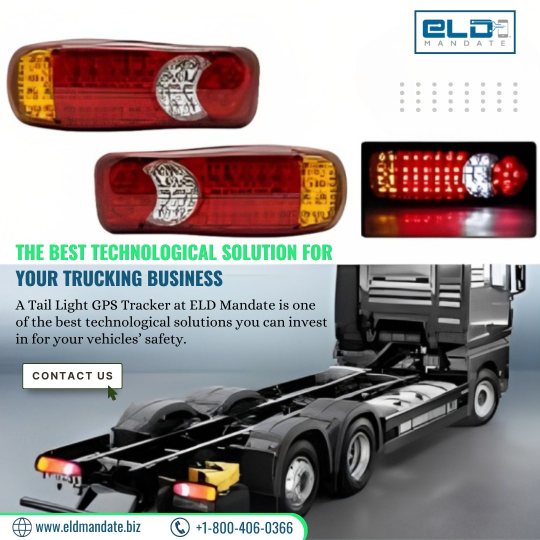
In this comprehensive article, we delve into various facets of the Canadian trucking industry. From truck driver salaries and the best truck brands to prominent trucking companies, we've got you covered.
Truck Driver Salaries in Canada
In a continuation of our previous article on becoming a truck driver in Canada, we now explore the salary prospects in this profession. Trucking in Canada not only offers a chance to traverse the vast expanse of the Great White North but also provides an attractive income. Even newcomers to Canada can consider a career in trucking.
How much do truck drivers make in Canada?
With a combination of experience and qualifications, truckers across Canada can earn annual incomes ranging from $48,750 to $82,875 CAD. Several factors influence these earnings, including the driver's skill level, training, years of experience, language proficiency in English and French, and the province of operation.
The average salary for a truck driver in Canada stands at $49,718 CAD per year, equivalent to $25.50 per hour. Entry-level positions typically start at $34,125 CAD per year. Interestingly, reports indicate a growing shortage of truck drivers in Canada, with projections suggesting a shortage of 25,000 truck driving positions by 2023. This increasing demand has led to a lower unemployment rate for truck drivers, which was just 3.3% in 2020, significantly below the national unemployment rate of 5.8% at the same time. Below, we provide an overview of average salaries for truck drivers in various Canadian provinces.
Best Semi Trucks in Canada
Given Canada's diverse geography, from rugged mountainous terrains to flat prairies and dense forests, trucks operating in the region must be dependable and adaptable. This is particularly important for trucks that may cross into the United States. Here are some highly reliable commercial truck brands that cater to the needs of owner-operators and large fleets in Canada:
1. Volvo
Volvo, one of the largest commercial truck brands in Canada, commands a 13.9% market share in the country. Known for innovation, Volvo has been focusing on autonomous trucks and electric vehicles. Their trucks feature advanced connectivity through telematics data, enabling seamless communication between vehicles on the road. The in-cab interiors offer comfort, and remote diagnostics enhance the ease of driving. Fleet owners can diagnose and troubleshoot issues through a dedicated Windows app.
2. International
In 2018, International trucks accounted for almost 36% of Class 7 truck sales in Canada. Renowned for reliability, International has been working to improve fuel efficiency and vehicle uptime. Their 2020 International LT Series aims to enhance vehicle aerodynamics, reducing the tractor-trailer gap and improving roof fairings to achieve an 8.2% fuel economy improvement.
3. Freightliner
With 75 years of experience, Freightliner stands out with its Detroit powertrain, which optimizes engine, transmission, and axle coordination for improved efficiency. The company is actively researching ways to reduce trucking emissions by transitioning some of their semi-trucks from diesel engines to hydrogen fuel cells.
4. Peterbilt
Peterbilt trucks are known for their comfort, making them a preferred choice for long-haul drivers. SmartAir technology helps save fuel, while Smartlinq remote diagnostics ensure driver safety and quick issue resolution. In 2020, Peterbilt began limited sales of electric vehicles, with plans to steadily increase their electric fleet.
5. Mack
Mack has a century-long history of producing commercial trucks sold in 45 countries. It's the largest manufacturer of Class 8 trucks in North America. Mack trucks excel in diverse climate zones, featuring Absorbent Glass Mat batteries designed for temperature fluctuations and maximizing fuel efficiency, often utilizing natural gas instead of diesel.
6. Kenworth
Kenworth is also exploring hydrogen fuel cell technology for its Class 8 commercial trucks. In collaboration with Toyota, they aim to run 10 of their T680 trucks on hydrogen fuel cells with zero emissions. These aerodynamic trucks boast a comfortable sleeper cab and top-notch infotainment and navigation systems.
For more detailed insights into these truck brands, read our article on the "6 Best Semi Truck Brands for Owner Operators."
Finding a Good Used Commercial Truck in Canada
While the aforementioned truck brands are impressive, commercial trucks represent a significant investment for trucking businesses. To reduce upfront costs, consider purchasing a used truck. However, before making such a decision, it's crucial to assess your business requirements, budget, and the following factors:
History, Maintenance, and Accident Checks
Delve into the truck's history and understand why the current owner is selling it. Examine maintenance and repair records diligently, paying particular attention to oil change records, which can impact engine longevity. Check for any past accidents, their nature, extent of damage, and replaced parts.
Quality Checks
Inspect the truck for physical damage, including rust, both on exterior surfaces and within the vehicle. Bumps or imperfections on painted surfaces, especially the roof, may indicate underlying rust issues. Vigilance against physical damage is essential.
Mileage Checks
Mileage is a key indicator of a truck's overall quality when considered alongside other factors. Understanding the engine model can help determine when an engine rebuild may become necessary.
Horsepower and Towing Capacity Checks
Assess the engine's horsepower and towing capacity to ensure they align with your business's specific towing requirements. Different operations may necessitate varying levels of power.
Purchasing a truck is a significant decision, and these checks can help ensure the truck's long-term viability and cost-effectiveness.
Largest Trucking Companies in Canada
In 2018, the Canadian trucking industry generated a substantial revenue of $39.55 billion CAD, driven by nearly 63.7 million shipments. Larger trucking companies typically operate nationwide, offering drivers diverse experiences and better pay, equipment, and benefits. Here are a few of the largest trucking companies in Canada:
1. TFI International Inc.
Headquartered in Montreal, Quebec, TFI International operates through four business segments, providing a wide range of transportation and logistics services, including truckload, LTL, dedicated contracts, expedited shipments, intermodal transport, temperature-controlled hauling, bulk shipments, tankers, and warehousing.
TFI International's strategic approach allows its subsidiaries to serve regional markets independently while granting the parent company access to broader markets. It boasts the largest share in Canada's LTL business and is Canada's largest trucking fleet.
2. Mullen Group
Mullen Group, a significant player in the Canadian trucking industry, operates various trucking companies, including S. Krulicki & Sons Ltd. Its services extend throughout Canada and the continental United States, encompassing LTL, logistics, warehousing, and distribution.
3. Day & Ross
Founded in 1950, Day & Ross has grown to become a key player in the Canadian trucking landscape. Acquisitions and growth have expanded its presence across North America, offering a comprehensive range of services, including LTL, temperature-controlled delivery, and more.
4. Bison Transport
Established in 1969 and based in Winnipeg, Bison Transport has evolved into a major trucking company. With key terminal hubs across Canada, Bison Transport specializes in cross-border truckload transportation, servicing 48 U.S. states.
3 notes
·
View notes
Text
Unfortunately, the railroad connection part isn't actually true and is essentially just a modern myth made up to sound cool.
The short story is that 4 feet 8.5 inches was chosen essentially at random by mostly unqualified lawmakers and one engineer polling local farmers.
The long story is as follows-
Early railroads were not standardized and even in Britain, where they were invented and developed, would not be so for almost a century after the technology's invention and acceptance by the public. Early railroads were a range of different gauges ranging from about two imperial feet to over seven (from about ⅔ to over two whole meters).
Now, track gauge matters greatly to railroad operations for two reasons that are in direct competition with each other: wider gauges can carry larger vehicles with heavier axle loads at higher speeds safely, while narrower gauges can negotiate tighter turns and steeper inclines. That's why railroads in mountainous countries like New Zealand and Japan use narrow gauge to this day, while large expansive countries like Russia, India, and parts of Australia use broad gauges.
Now each company and line would develop their network using the gauge that best suited themselves only. These numerous incompatible gauges required completely unloading one train to load on to another at a "break of gauge", or the point where two lines with incompatible gauges met. Once it became apparent that this new technology was going to be an incredibly important tool for transportation in the rapidly growing nation, the British Parliament became concerned with the negative impact numerous breaks of gauge were going to have.
In the 1840s, parliament conducted a study to determine what the ideal gauge for a national network would be. It was found that around 4½ imperial feet would best balance the infrastructural needs of Britain's terrain and existing infrastructure with the operational desire for maximum capacity per train. Somewhat arbitrarily, the close-enough "Stephenson" gauge of 4 feet 8½ inches used on the Liverpool and Manchester railway was chosen (which was itself chosen by the L&M's chief engineer as a mathematical average of the widths of local farmers' field wagons and ploughs in order to eventually offer easy transport service to local farmers, plus an extra half inch to accomodate the lateral motion used by train wheels to navigate turns)
Now fast forward to railways in the US. Railways in the northern states, being much historically and economically closer to England, almost all went with the now "British Standard" gauge (except notably for Pennsylvania, whose unique 5 foot 2½inch gauge survives today in rapid transit networks in Philadelphia, Pittsburgh, and New Orleans). In the Agrarian South, however, the railways found it more profitable to increase gauge (most often to Irish Broad 5'3" though never to a single standard) in order to take advantage of the flatter geography and increase cargo capacity.
Railroads in the US actually remained quite divided in this manner through the civil war, where the southern break of gauge actually proved to be quite an obstacle to invading armies on both sides of the lines. Though the Northern and British standard was ultimately chosen for the entire country during the reunification and reconstruction era. Now, with notable exception for some montane private and historically preserved railways, and San Francisco's BART system, railways in the US almost exclusively use the nearly randomly chosen (and having nothing to do with Roman chariots) 4'8½" British Standard gauge.
So the TLDR of the story is that Roman chariots weren't actually necessarily the origin of modern standard track gauge, rather it was the result of how 1700s farmers in Northern England built or ordered their equipment, randomly picked as "good enough" by Parliament a few decades later to be the national standard, then picked as the US standard because it was preferred by the businesses of the day in the side that won the civil war. It was not nearly as scientific or historically thought out as using the axle gauge of Roman chariots, especially considering that locomotives have almost always had to be built in specialized workshops that have the equipment specifically for dealing with iron and steel in the sizes and quantities necessary for a vehicle the size of a house.
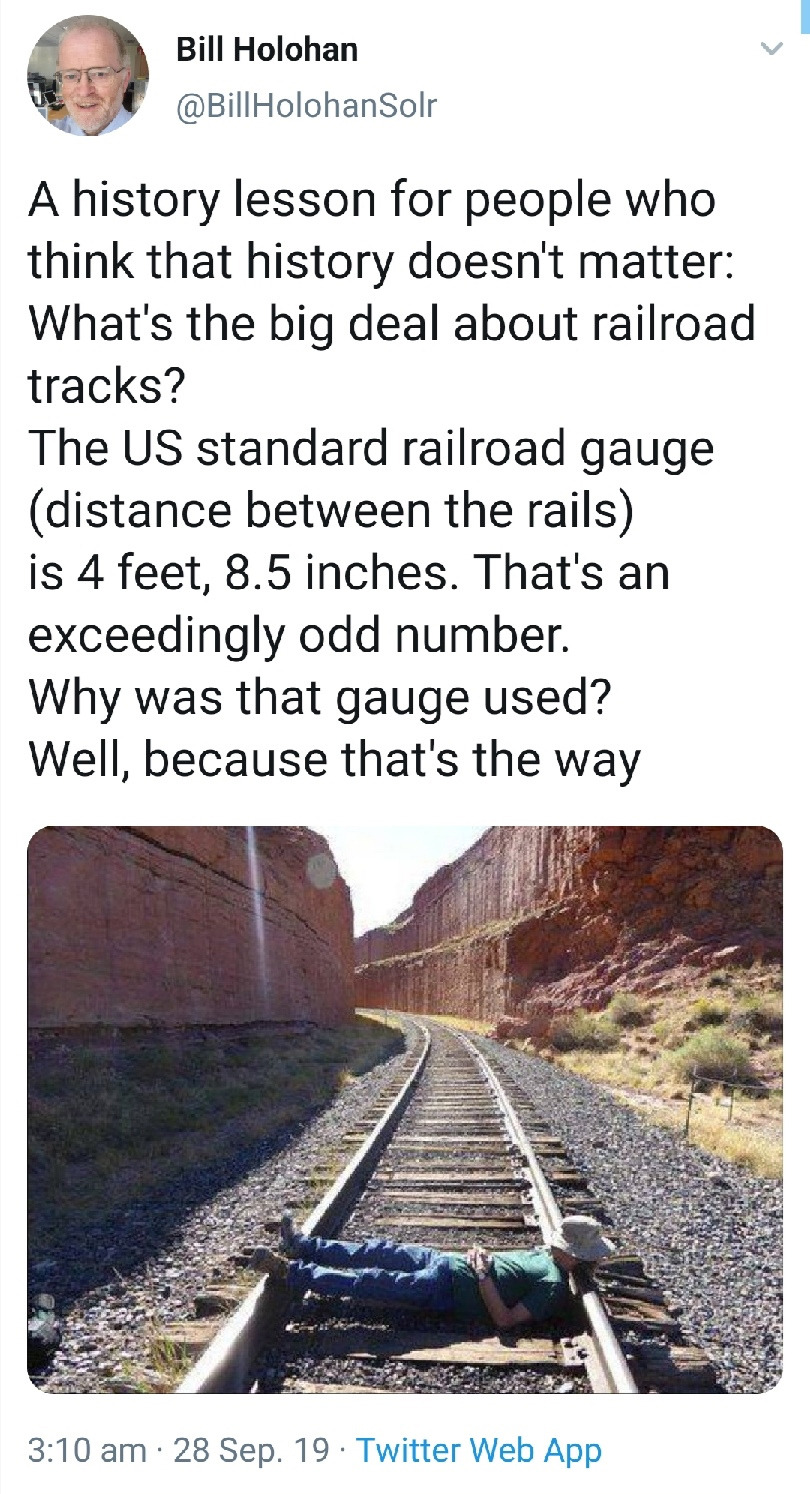
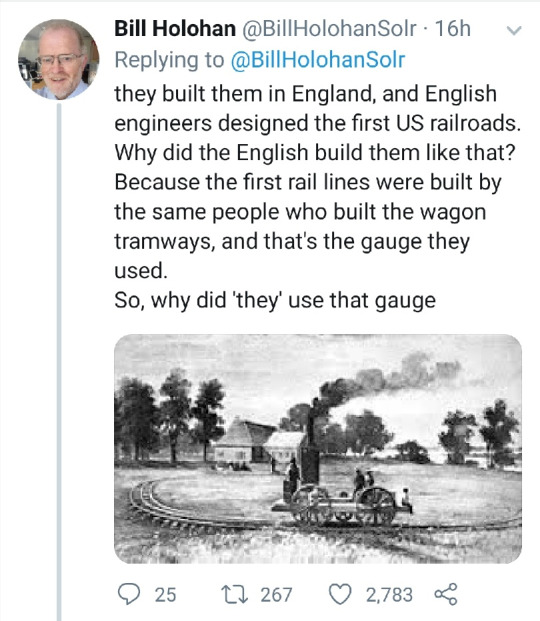


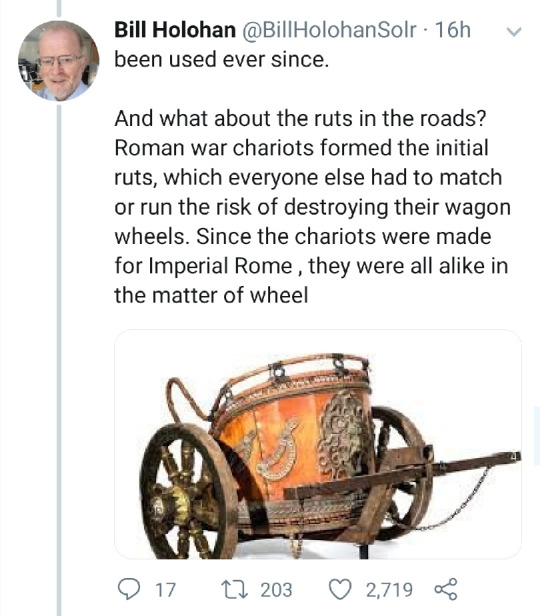


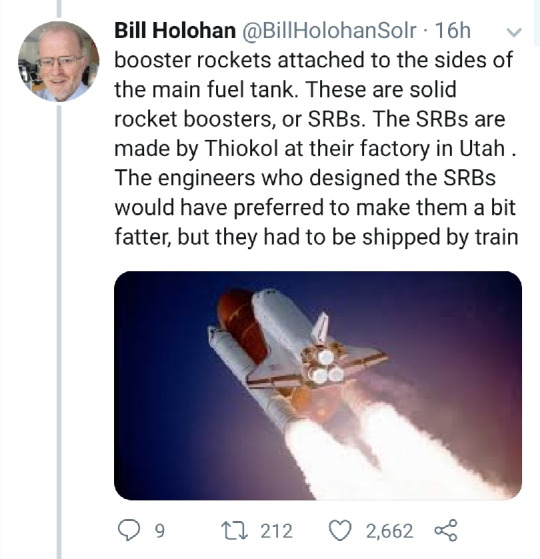

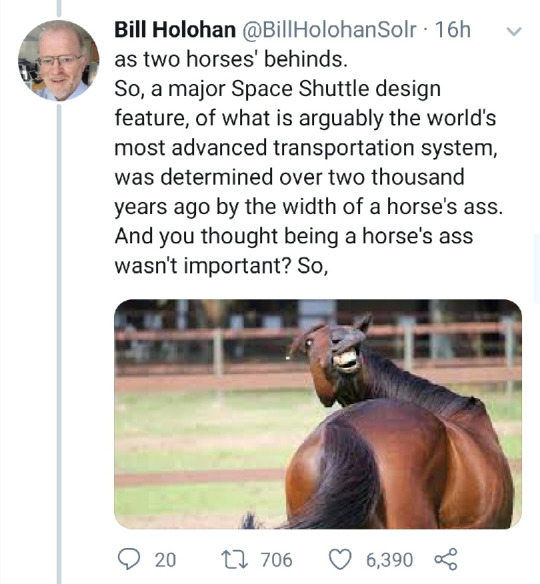
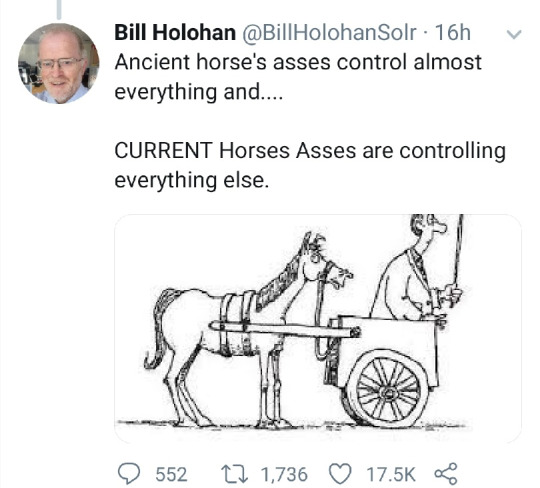
159K notes
·
View notes